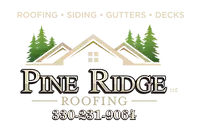Melrose Village Roof Damage by Weather Conditions and Insurance Claims - A Comprehensive Guide
Your dwelling serves as your sanctuary, and the integrity of your roof is paramount to ensuring its safety and security. So, what transpires when unavoidable roof damage by weather conditions befalls your abode? Navigating the labyrinth of roof damage types induced by the elements, unraveling the intricacies of insurance claims, and embracing the nuances of roof maintenance can significantly impact the preservation of your investment.
This extensive guide is designed to escort you through the essentials, empowering you to shield your home and confront roof damage by weather conditions and insurance claims with assurance.
In Melrose Village, roof damage is a recurring consequence of severe weather conditions such as storms, high winds, tornadoes, and hail. Pine Ridge Roofing stands ready to lend support in addressing these challenges.
Key Takeaways
Table of Contents
Melrose Village Roof Damage - Types of Weather-Related Roof Damage
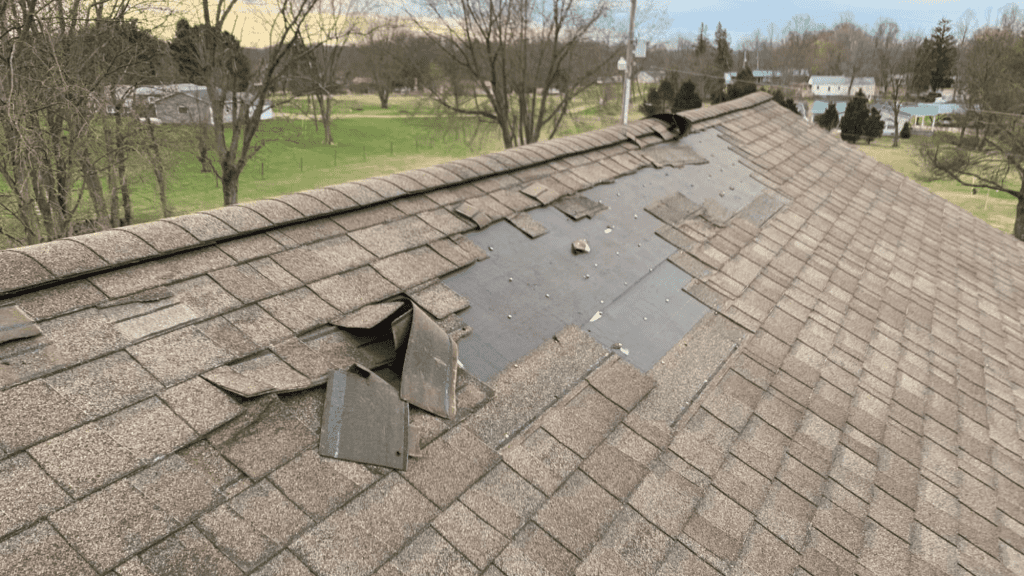
In Melrose Village, roof damage by weather conditions is really common. Weather can be unpredictable, and it can wreak havoc on your roof. Wind, hail, and rain or snow are the most common culprits of weather-related roof damage, often leading to insurance claims and costly repairs or replacements.
Protecting your home requires recognizing the signs of storm damage and comprehending how these forces impact your roofing materials.
Is roof damage covered by insurance? For home insurance to provide coverage for your roof damage expenses, it is essential to establish that the damage was a direct result of an extreme weather event.
Wind Damage
In Melrose Village, roof damage caused by high winds poses a potential silent menace to the stability of your roof. This damage may include missing shingles, lifted flashing, or cracked tiles, and in severe instances, the entire roof may be displaced. Despite appearing minor initially, these damages can escalate over time, resulting in leaks and structural issues that necessitate initiating the roof insurance claim process.
Repairing an older roof presents its own challenges, particularly with less flexible and prone-to-cracking shingles. In such cases, involving a qualified roofing specialist for a thorough roof inspection and timely damage resolution becomes crucial.
Gaining insight into the specifics of wind insurance coverage within your homeowner’s insurance policy is fundamental for preparedness, especially during adverse weather conditions like storms.
Wind damage can arise from various weather events, including severe storms or hurricanes. Regularly monitoring your roof after such events is essential, and taking swift action upon observing visible signs of wind damage is critical. If, for instance, a substantial tree branch is discovered on your roof, it is advisable to have it professionally removed to prevent further damage and potential roof damage claims.
Hail Damage
When hailstorms hit, they can cause widespread damage, leaving shingles with dents, punctures, and granule loss. Although this damage might go unnoticed by the untrained eye, its repercussions for your roof’s durability and functionality are significant. Hail has the potential to bruise or crack the shingle mat, opening the door for water to gradually enter your home and potentially leading to a necessary roof claim.
Roof inspection for hail damage can be challenging, especially after a storm. Insurance adjusters and roofing professionals often consider metal components surrounding the roof, such as:
- Roof vents
- Pipe boots
- Gutters
- Roof flashing
It is important to emphasize that inspecting the roof immediately after a storm, especially if it has a steep slope, is not recommended. In cases of substantial hail damage, taking immediate action, such as applying tarps to the roof, becomes crucial to prevent further damage from rainwater.
Rain and Snow Damage
Rain and snow may seem harmless, but they can wreak havoc on your roof if not properly managed. Here are some potential issues caused by rain and snow:
- Leaks and water damage
- Structural issues
- Roof collapse due to the weight of accumulated snow
- Ice dams, which can damage your roof and gutters
It’s important to take steps to protect your roof from these potential problems.
To prevent damage from rain and snow, adopting preventive measures like regular inspections, proper ventilation, and robust waterproofing is essential. Being proactive in maintaining your roof and having a clear understanding of homeowner’s insurance coverage alternatives, such as Actual Cash Value (ACV) and Replacement Cost Value (RCV) policies, can go a long way in mitigating the potential for expensive repairs or replacements due to weather-related issues.
Melrose Village Roof Damage - Insurance Coverage for Weather-Related Issues
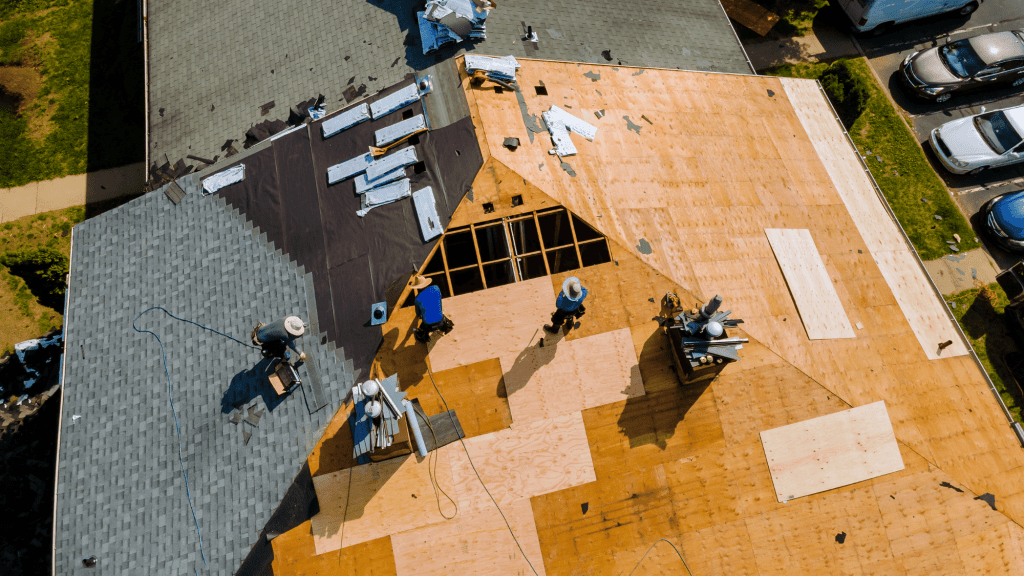
The insurance company plays a vital role in providing financial protection in the event of unexpected roof damage in Melrose Village, Ohio. However, navigating the complexities of insurance coverage can be daunting. Understanding the differences between policy types, such as Actual Cash Value (ACV) and Replacement Cost Value (RCV), and being aware of common exclusions can make a significant difference in how your claim is handled and ultimately settled.
Policy Types: ACV vs RCV
When it comes to roof coverage, an Actual Cash Value (ACV) policy is designed to facilitate the replacement process by reimbursing you for the depreciated value of your roof, minus the deductible. Essentially, this means you’ll receive compensation based on the current value of your roof at the time of damage. However, it’s important to note that this might not cover the entire cost of repairs or replacement.
On the flip side, a Replacement Cost Value (RCV) policy offers more extensive coverage. It covers the entire cost of roof replacement, providing funds for a new roof based on current market prices and materials. Under an RCV policy, you’ll first receive a check for the actual cost value of your roof. After completing the roof replacement, a second check for the remaining amount will be issued, contingent upon meeting all specified requirements.
The choice of a suitable policy for your needs can greatly impact the payout you receive in the event of a roof damage claim, making it an important decision. It is essential to:
- Review your insurance policy
- Understand the differences between ACV and RCV
- Consult with your home insurance company to ensure you have the appropriate coverage for your specific situation.
Common Exclusions
Preserving your home from weather-related roof damage in Melrose Village, Ohio, with homeowners insurance is a wise choice, but it’s essential to be mindful of common exclusions that may affect your claim, such as:
- improper installation, where deviating from the manufacturer’s instructions or local building codes during roof installation can lead to accelerated wear and tear, potentially invalidating your roof’s warranty.
- Lack of maintenance is another exclusion to watch out for, involving neglecting routine roof upkeep such as cleaning gutters and removing debris. Damages resulting from inadequate maintenance may not be covered by your insurance policy.
- Additionally, specific weather events, like hurricanes or earthquakes, may be excluded from coverage in some policies.
A careful review of your insurance policy is crucial to understand these exclusions and ensure you have the appropriate coverage for your roof. Inadequate maintenance occurs when a roof is not regularly inspected and maintained according to the manufacturer’s instructions or local building codes, possibly resulting in premature deterioration and warranty invalidation.
Understanding these exclusions and taking proactive measures to ensure proper roof installation, regular maintenance, and protection from excluded weather events can help you avoid potential claim denials and ensure you receive the coverage you deserve.
Melrose Village Roof Damage - Filing an Insurance Claim
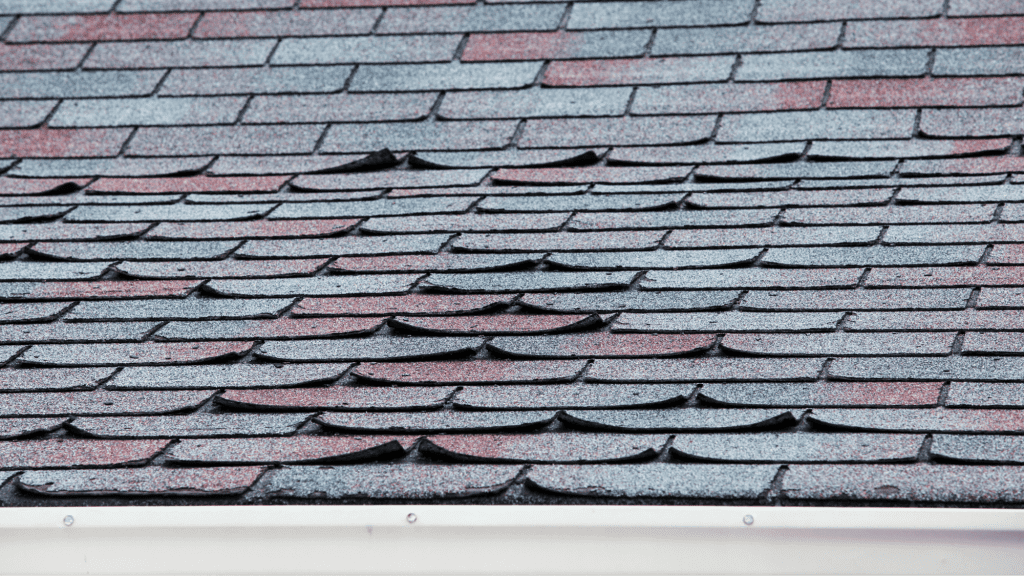
Filing an insurance claim for roof damage in Melrose Village, Ohio demands a strategic and meticulous approach. Knowing how to thoroughly document the damage, establishing effective communication with insurance adjusters, and making informed choices in selecting a roofing contractor are critical components of a successful claims process.
This guide is your companion, offering detailed steps and practical tips to navigate the insurance claim journey for roof damage with ease.
Documenting the Damage
Before filing an insurance claim for roofing damage, it is crucial to maintain a detailed documentation process. Follow these steps:
- Photograph the affected areas extensively, emphasizing any missing shingles, raised flashing, or damaged tiles.
- Prepare a comprehensive list of the damage, accompanied by detailed notes, including dates, times, and relevant weather conditions contributing to the damage.
- If preventive measures have been taken, such as securing tarps to the roofing, document these measures through photographs.
After documenting the damage, seek an estimate from a certified roofing contractor to assess the repair or replacement costs. This estimate not only clarifies the extent of the damage but also serves as critical documentation when presenting your claim to the insurance company. Maintaining a thorough and accurate record of the roofing damage significantly improves the chances of a successful claim.
Working with Adjusters
In Melrose Village, roof damage evaluation involves the integral role of insurance adjusters in determining the value of your claim payout. Collaborating effectively with these adjusters is paramount for securing the best possible outcome for your claim. It’s crucial to provide accurate information, maintain thorough records of all interactions and pertinent documents, and uphold honesty throughout the process.
When faced with a denied claim, exploring various resolution options is essential:
- Consider asking your insurance company for a different adjuster to obtain a second opinion.
- Alternatively, engaging a structural engineer for a comprehensive inspection and evidence of the damage is a viable step.
- As a last resort, legal avenues can be pursued.
Understanding the adjusters’ role and being well-prepared to work with them increases the likelihood of a successful claim. This ensures you receive the necessary coverage to repair or replace your roof damaged in Melrose Village.
Choosing a Reputable Roofing Contractor
Opting for a trustworthy roofing contractor is crucial for ensuring top-notch work and a seamless insurance claims process. When exploring roofing contractors for insurance claims, it’s essential to assess their experience in dealing with claims, turnaround times, and their ability to collaborate with adjusters. A competent roofing contractor can meticulously document damage in line with insurance companies’ standards and offer an expert evaluation.
Choosing a local and dependable roofing contractor, such as Pine Ridge Roofing, ensures confidence in the handling of your roof repair or replacement. Their team of certified roofers and insurance specialists is dedicated to assisting with storm repair, restoration, and insurance claims in Melrose Village, Ohio, and nearby areas. Opting for an established roofing contractor guarantees the safety and integrity of your home.
Melrose Village Roof Damage - Preventative Measures and Maintenance
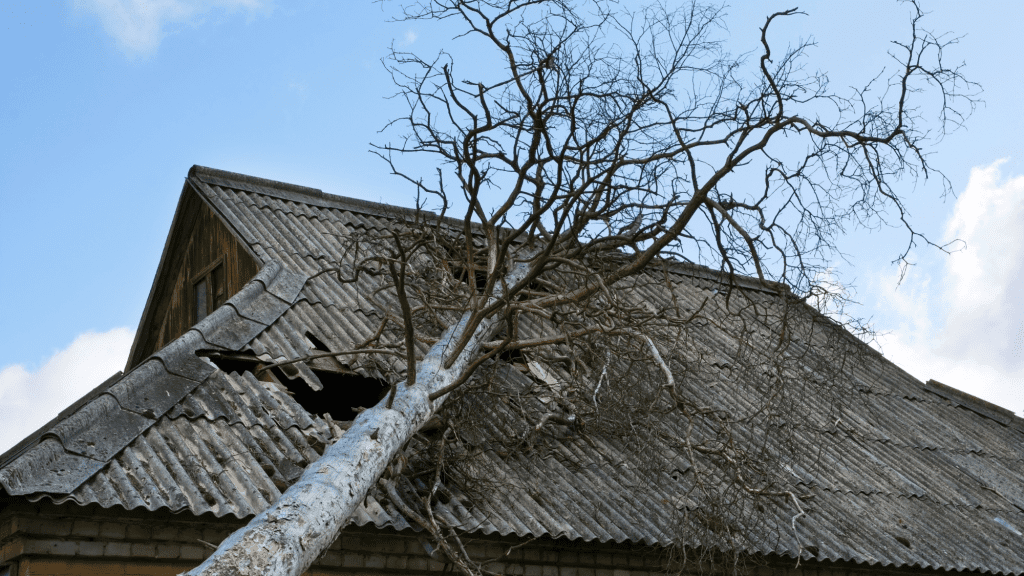
While insurance can provide financial protection for weather-related roof damage, taking preventative measures and maintaining your roof can help you avoid costly repairs or replacements in the first place. This section highlights the importance of routine inspections, appropriate ventilation, and waterproofing for maintaining your roof in prime condition and minimizing the risk of weather-related damage.
Routine Inspections
Regular roof inspections serve as an effective method to spot and tackle potential issues before they escalate into significant problems. Inspections should evaluate the roof for signs of:
- Deterioration
- Missing or damaged shingles
- Debris in the gutters
- Roof ponding
For optimal roof health, it’s crucial to conduct routine inspections, particularly in regions with challenging weather conditions. Aim for inspections at least twice a year to detect and address minor issues early on, preventing them from turning into major concerns.
Pine Ridge Roofing, a reputable contractor, provides free roof inspections to ensure your roof’s integrity. Take a proactive step in preserving your roof—schedule your inspection today by calling us now.
Proper Ventilation and Waterproofing
Proper ventilation and waterproofing are essential elements in safeguarding your roof against moisture buildup, ice dams, and other weather-related damage. This involves:
- Maintaining good indoor air quality
- Implementing effective home ventilation practices
- Utilizing exhaust fans and air purifiers
- Installing a robust ventilation system
- Correctly attaching roof ventilation products.
Inadequate attention to ventilation and waterproofing can lead to issues such as moisture accumulation and ice dams, potentially requiring expensive repairs and replacements. By prioritizing these measures, you can mitigate the risk of damage, ensuring your roof’s longevity and the optimal performance of your roofing materials.
Pine Ridge Roofing: Your Partner in Roof Repair and Insurance Claims
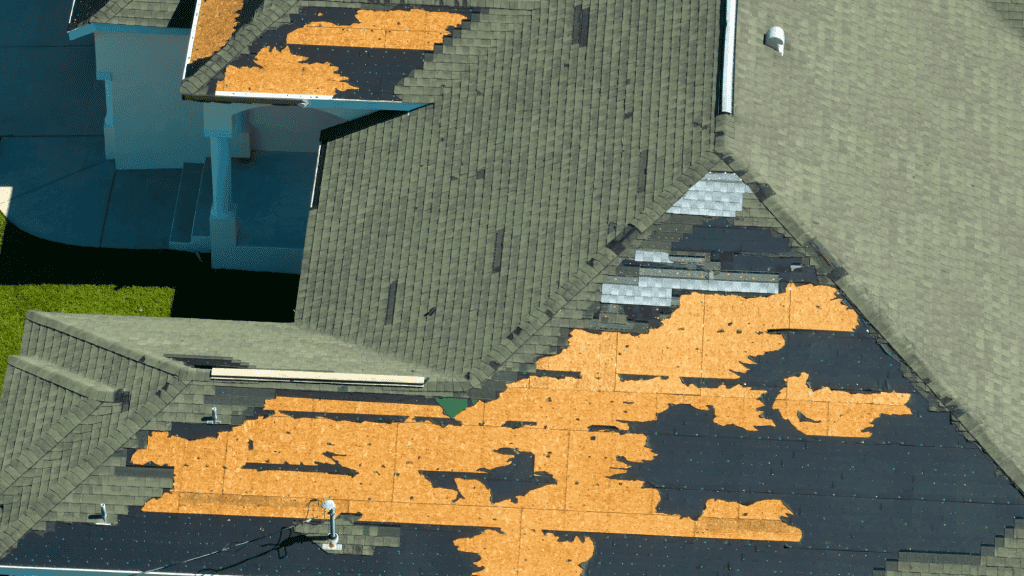
Pine Ridge Roofing, serving Melrose Village, OH and surrounding areas, specializes in:
- Storm damage repairs
- Insurance claims
- Emergency inspection
- Tarping services
- Assistance with insurance claims for weather-related roof damage
- Roof replacements
- Siding repair and replacement
- Gutter repair and replacement
- Leaf Guard Installation
- Deck building
With over 25 years of combined experience, our team of certified roofers and insurance specialists is dedicated to delivering top-notch roof repairs and ensuring your home is protected and restored after a weather-related damage event.
Emergency Inspection and Tarping Services
If you suspect roof damage, reaching out to Pine Ridge Roofing for a complimentary emergency inspection is essential. This inspection assists in evaluating the extent of the damage, guiding decisions on necessary repairs or replacements. Our team of experts meticulously examines your roof, pinpointing issues such as missing shingles, raised flashing, or cracked tiles that demand immediate attention.
Apart from emergency inspections, Pine Ridge Roofing provides the following services:
- Our tarping services offer temporary protection, preventing further damage to your roof.
- Take swift action by securing your roof with tarps to minimize the risk of additional damage.
- We ensure your home stays safe and secure throughout the insurance claim process.
Insurance Claim Assistance
Navigating the insurance claim process can be overwhelming, but Pine Ridge Roofing is here to help. They offer the following services:
- Assisting with insurance claims
- Representing homeowners
- Negotiating with insurance companies
- Providing quality roof replacement services
Their expertise in insurance claims ensures that you receive the best possible outcome for your claim, allowing you to focus on what matters most: the safety and well-being of your family.
Pine Ridge Roofing’s insurance claim assistance includes:
- Scheduling an emergency inspection
- Tarping damaged areas
- Representing the homeowner and meeting the insurance adjuster at the property.
- Negotiating with the insurance company
- Replacing the roof with top-notch products, such as Owens Corning shingles and synthetic felt
With Pine Ridge Roofing by your side, you can trust that your roof repair or replacement will be handled professionally and efficiently, giving you peace of mind in knowing that your home is protected.
Summary
Weather-induced roof damage in Melrose Village, OH poses a significant challenge for homeowners. It’s crucial to grasp the various types of damage, adeptly navigate the insurance claim process, and proactively maintain your roof. This detailed guide equips you with the necessary knowledge. By partnering with Pine Ridge Roofing, a trusted contractor, you can confidently confront any weather-related roof damage, ensuring the safety and security of your home and loved ones.
Frequently Asked Questions
Does Home Insurance Cover Roof Storm Damage?
Home insurance policies vary in how they address roof storm damage, depending on the specifics of the policy. Generally, insurance plans offer coverage for damages caused by hail, strong winds, destruction from falling objects, and interior damage due to roof storm damage. For example, if a storm leads to the destruction of your roof and subsequent rainwater damage to the ceiling, your insurance policy will typically cover the necessary repairs for both the roof and ceiling.
Are blown-off shingles covered by insurance?
Insurance companies often grasp the critical importance of a sound roof and usually extend coverage to encompass the expenses linked to replacing a roof, especially when damage occurs due to unpreventable factors like the dislodging of shingles.
What is considered wind damage to shingles?
Wind-induced shingle damage is commonly identified by tearing, creasing, or detachment from the roof surface. This phenomenon is particularly prevalent in three-tab shingles, primarily caused by frequent lifting or flapping. It’s worth noting that unsealed shingles generally avoid such issues unless there is noticeable physical mat damage.
My roof doesn’t leak. Does this mean my roof is okay?
Just because your roof doesn’t exhibit leaks, it doesn’t necessarily indicate that your roof is in perfect condition. In numerous instances, roof damage isn’t immediately visible, and leaks might not manifest during the next rainfall. Concealed damage can persist unnoticed for an extended period. Skilled roofing professionals, as we have at Pine Ridge Roofing, possess tools and techniques that enable them to identify moisture beneath roofing materials and identify areas of damage that might otherwise go unnoticed. Schedule your free inspection now!
What is the most common roof damage?
A common challenge is roof damage in Melrose Village, Ohio, particularly manifested as leaking roofs. This is frequently attributed to broken shingles, and inadequate flashing near chimneys or gutters, and around vents or pipes.
